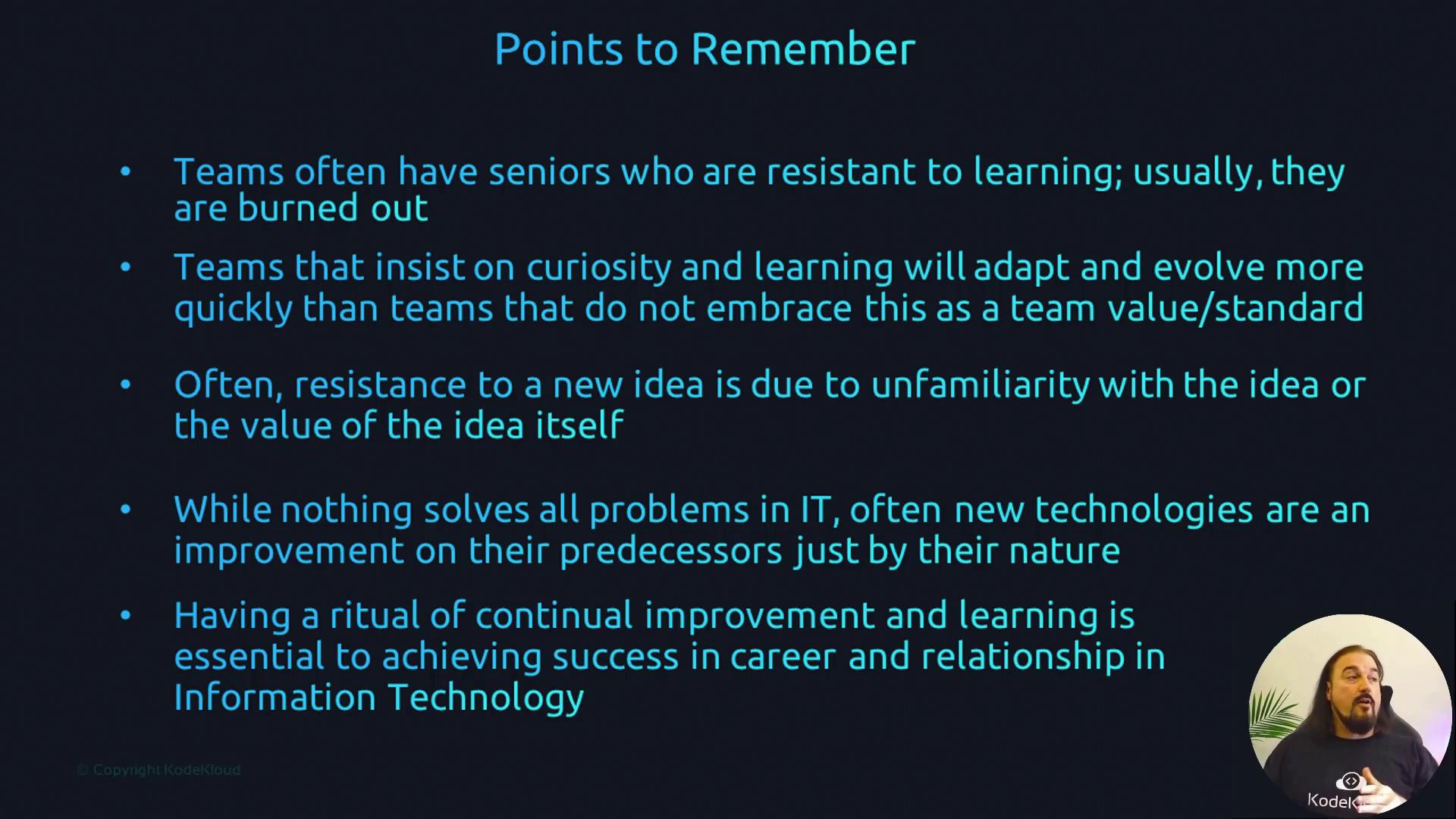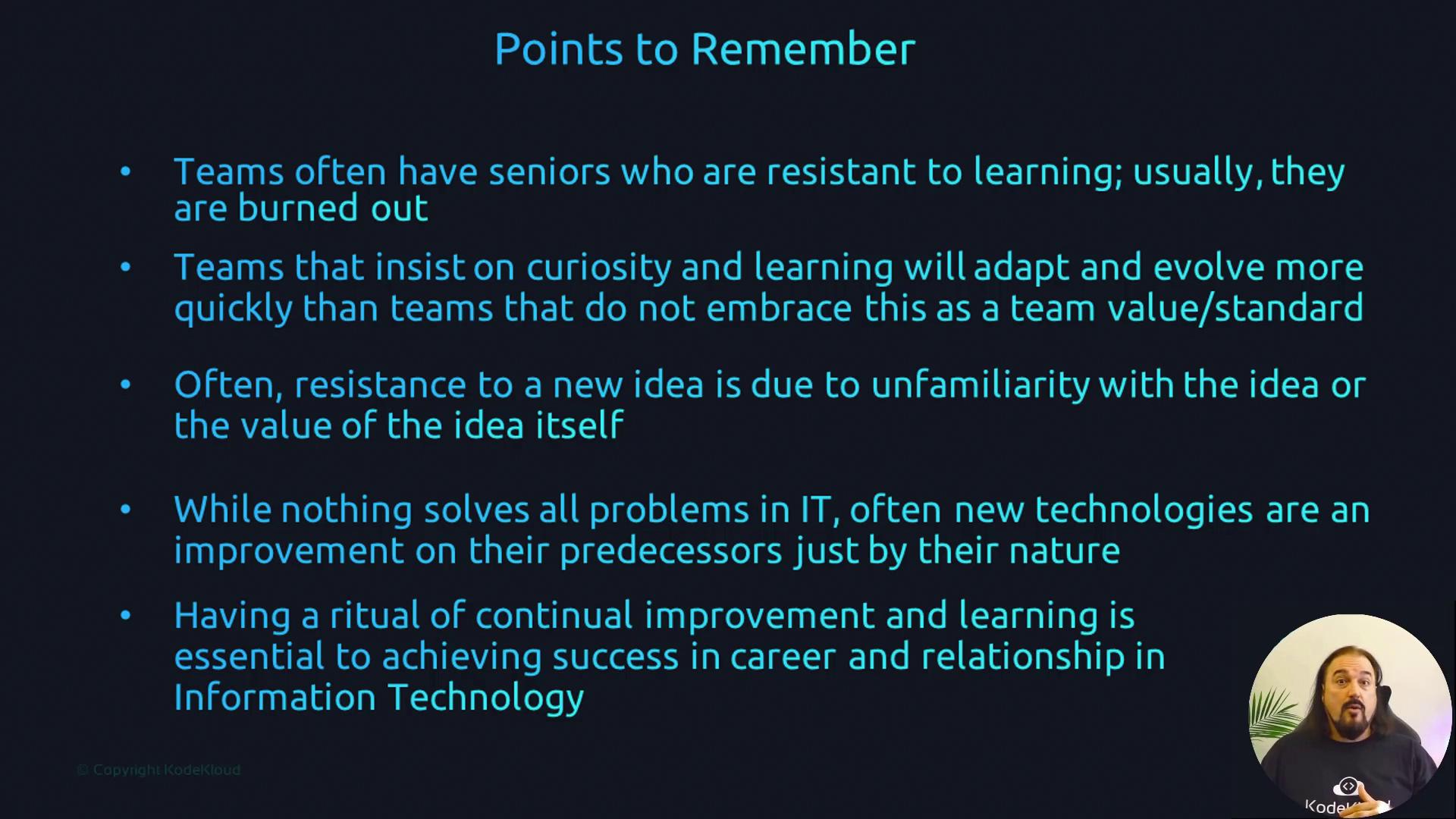Fundamentals of DevOps
ProductTechnology
An Architects Scenario
Hi, welcome back! In this lesson, we explore a real-world DevOps scenario that highlights both the challenges and the growth opportunities experienced by IT professionals. Today’s focus is on an architect’s journey in adapting to emerging technologies and evolving strategies.
The Challenge
Team ROI encountered a unique hurdle. While the team as a whole was on board with the latest technological advancements, one seasoned member, Annie—the team’s architect—felt uneasy. She questioned the need for transitioning from traditional monolithic architectures to microservices, and from data centers to the cloud. Despite being well-versed in fundamentals, Annie wondered:
- "Why do we need microservices when monoliths have always worked?"
- "What additional benefits does the cloud offer over our existing data centers?"
- "Virtual machines have been reliable for 20 years—why should we move to containers and orchestrators?"
Her concerns stemmed from uncertainty about these new approaches, even though the technical explanations were sound.
Note
Annie's hesitation was not a reflection of incompetence but rather a natural reaction to embracing unfamiliar technology.
Embracing Growth
Recognizing Annie’s significant experience and value to the team, her colleagues decided to invest in her professional growth. Instead of enforcing an immediate, full-scale transition, they tasked Annie with leading a proof-of-concept (POC) to test these new technologies. Her objective was to experiment, learn, and provide concrete data to inform future decisions.
Annie rose to the challenge. She immersed herself in studying, experimenting, and launching various POCs. As she explored both fundamental and intermediate aspects of the emerging technologies, her perspective broadened. The results of her experiments validated that although no single technology is a universal solution, modern advancements do offer distinct benefits over older methods.
Key Takeaway
By embracing learning and experimentation, IT teams can overcome resistance and become more agile in adopting new technologies.
Lessons Learned
Through this experience, the team reinforced several important concepts:
- Experienced professionals may resist new technologies: This hesitation can occur due to burnout or simply the discomfort of learning something unfamiliar.
- Encouraging continuous learning is critical: Teams that foster curiosity and ongoing education are more likely to successfully evolve.
- Experimentation provides valuable insights: Proofs-of-concept can reveal the potential benefits of new technologies, guiding strategic decisions.

Resistance to change is often rooted in unfamiliarity. As demonstrated in this scenario, overcoming such resistance is vital for both personal and organizational growth.

Conclusion
No single technology can address every challenge in the ever-evolving field of information technology. However, modern solutions often improve upon legacy systems by mitigating known limitations. Cultivating a culture of continuous improvement and openness to learning is indispensable for building a successful career and fostering robust professional relationships in IT.
Thank you for reading this lesson. I appreciate your time and look forward to exploring more DevOps scenarios with you in our upcoming sessions.
For more insights on DevOps and modern IT strategies, visit our DevOps Documentation page.
Watch Video
Watch video content